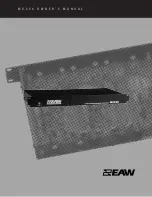
96BInstallation
3.4 Wiring guidelines
S7-1200 Programmable controller
System Manual, 11/2011, A5E02486680-05
59
All S7-1200 modules have removable connectors for user wiring. To prevent loose
connections, ensure that the connector is seated securely and that the wire is installed
securely into the connector. To avoid damaging the connector, be careful that you do not
over-tighten the screws. The maximum torque for the CPU and SM connector screw is 0.56
N-m (5 inch-pounds). The maximum torque for the SB connector screw is 0.33 N-m (3 inch-
pounds).
To help prevent unwanted current flows in your installation, the S7-1200 provides isolation
boundaries at certain points. When you plan the wiring for your system, you should consider
these isolation boundaries. Refer to the technical specifications for the amount of isolation
provided and the location of the isolation boundaries. Do not depend on isolation boundaries
rated less than 1500 VAC as safety boundaries.
Guidelines for lamp loads
Lamp loads are damaging to relay contacts because of the high turn-on surge current. This
surge current will nominally be 10 to 15 times the steady state current for a Tungsten lamp.
A replaceable interposing relay or surge limiter is recommended for lamp loads that will be
switched a large number of times during the lifetime of the application.
Guidelines for inductive loads
You should equip inductive loads with suppression circuits to limit voltage rise when the
control output turns off. Suppression circuits protect your outputs from premature failure due
to the high voltages associated with turning off inductive loads. In addition, suppression
circuits limit the electrical noise generated when switching inductive loads. Placing an
external suppression circuit so that it is electrically across the load, and physically located
near the load is most effective in reducing electrical noise.
S7-1200 DC outputs include internal suppression circuits that are adequate for the inductive
loads in most applications. Since S7-1200 relay output contacts can be used to switch either
a DC or an AC load, internal protection is not provided.
Note
The effectiveness of a given suppression circuit depends on the application, and you must
verify it for your particular use. Always ensure that all components used in your suppression
circuit are rated for use in the application.
















































